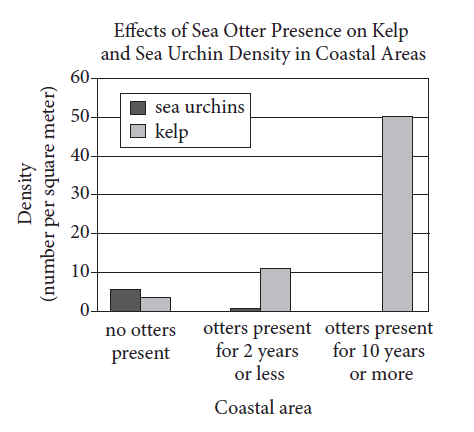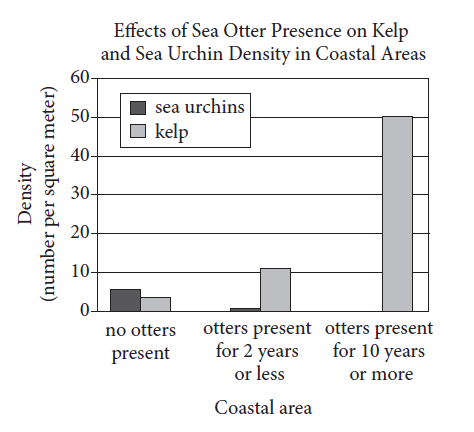Assertion: The diffusion of carbon dioxide is 20 times faster then oxygen.
Reason: It is due to difference in partial pressure as well as solubility of diffusing gases .
If both Assertion & Reason are true and the
reason is the correct explanation of the
assertion, then mark (1)
If both Assertion & Reason are true but the
reason is not the correct explanation of the
assertion , then mark (2)
If Assertion is true statement but Reason is
fakse, then mark (3)
If both Assertion and Reason are false
statements, then mark (4)
The correct Answer is:A
To solve the assertion and reason question, we need to analyze both statements carefully.
1. Understanding the Assertion:
- The assertion states that "The diffusion of carbon dioxide is 20 times faster than oxygen."
- This statement is true. Carbon dioxide (CO2) diffuses more rapidly than oxygen (O2) due to its higher solubility in water and its ability to react with water.
2. Understanding the Reason:
- The reason provided is "It is due to the difference in partial pressure as well as solubility of diffusing gases."
- This statement is also true. The diffusion rate of gases is influenced by both their solubility and the partial pressure gradient between the two sides of the membrane.
3. Analyzing the Relationship:
- The assertion is true, and the reason is also true.
- Moreover, the reason correctly explains why CO2 diffuses faster than O2. The higher solubility of CO2 compared to O2 and the difference in partial pressures contribute to the faster diffusion rate of CO2.
4. Conclusion:
- Both the assertion and the reason are true, and the reason provides a correct explanation for the assertion. Therefore, the correct answer would be that both statements are true, and the reason is the correct explanation for the assertion.
Final Answer:
Both the assertion and the reason are true, and the reason is the correct explanation for the assertion.
---
- The assertion states that "The diffusion of carbon dioxide is 20 times faster than oxygen."
- This statement is true. Carbon dioxide (CO2) diffuses more rapidly than oxygen (O2) due to its higher solubility in water and its ability to react with water.
- The reason provided is "It is due to the difference in partial pressure as well as solubility of diffusing gases."
- This statement is also true. The diffusion rate of gases is influenced by both their solubility and the partial pressure gradient between the two sides of the membrane.
- The assertion is true, and the reason is also true.
- Moreover, the reason correctly explains why CO2 diffuses faster than O2. The higher solubility of CO2 compared to O2 and the difference in partial pressures contribute to the faster diffusion rate of CO2.
- Both the assertion and the reason are true, and the reason provides a correct explanation for the assertion. Therefore, the correct answer would be that both statements are true, and the reason is the correct explanation for the assertion.
Both the assertion and the reason are true, and the reason is the correct explanation for the assertion.
Topper's Solved these Questions
- BREATHING AND EXCHANGE OF GASES Book:AAKASH INSTITUTE ENGLISHChapter:BREATHING AND EXCHANGE OF GASES Exercise:ASSIGNMENT SECTION - C
Explore 50 Videos
- BODY FLUIDS AND CIRCULATIONBook:AAKASH INSTITUTE ENGLISHChapter:BODY FLUIDS AND CIRCULATIONExercise:Assignment Section - D Assertion - Reason Type Questions
Explore 9 Videos
- CELL CYCLE AND CELL DIVISION Book:AAKASH INSTITUTE ENGLISHChapter:CELL CYCLE AND CELL DIVISION Exercise:SECTION-D (Assertion-Reason Type Questions )
Explore 10 Videos
Similar Questions
Assertion :− The amount of CO20 that can diffuse through the diffusion membrane per unit differnece in partial pressure is much higher compared to that of O2.
Reason :− The solubility of CO20 is 20-25 times higher than that of O20 solubility.
View SolutionCompared to O2 diffusion rate of CO2 through the diffusion membrane per unit difference in partial pressure is much higher. Explain.
View Solution
Knowledge Check
Environmentalist Otters
It has long been known that the sea otters (23) living along the West Coast of North America help––––––––––––––––––––––––––––––––––––––––––––––––––––––– keep kelp forests in their habitat healthy and vital. They do this by feeding on sea urchins and other herbivorous invertebrates that graze voraciously on kelp. With sea otters to keep the population of sea urchins in check, kelp forests can flourish. In fact, (24) two years or less of sea otters can completely eliminate sea urchins––––––––––––––––––––––––––––––––––––––––––––––––––––––––––––––––––––––– in a coastal area (see chart).

Adapted from David O. Duggins, “Kelp Beds and Sea Otters: An Experimental Approach.” ©1980 by the Ecological Society of America.
Without sea otters present, (25) nevertheless–––––––––––––, kelp forests run the danger of becoming barren stretches of coastal wasteland known as urchin barrens.
[1] What was less well-known, until recently at least, was how this relationship among sea otters, sea urchins, and kelp forests might help fight global warming. [2] The amount of carbon dioxide in the atmosphere has increased 40 percent (26) . [3] A recent study by two professors at the University of California, Santa Cruz, Chris Wilmers and James Estes, (27) suggests, that––––––––––––––– kelp forests protected by sea otters can absorb as much as twelve times the amount of carbon dioxide from the atmosphere as those where sea urchins are allowed to (28) devour–––––––– the kelp. [4] Like (29) their––––– terrestrial plant cousins, kelp removes carbon dioxide from the atmosphere, turning it into sugar fuel through photosynthesis, and releases oxygen back into the air.
[5] Scientists knew this but did not recognize (30) how large a role they played–––––––––––––––––––––––––––––– in helping kelp forests to significantly decrease the amount of carbon dioxide in the atmosphere. [6] Far from making no difference to the ecosystem, the presence of otters was found to increase the carbon storage of kelp forests by 4.4 to 8.7 megatons annually, offsetting the amount of carbon dioxide emitted by three million to six million passenger cars each year. (31)
Wilmers and Estes caution, however, that (32) having more otters––––––––––––––––––––– will not automatically solve the problem of higher levels of carbon dioxide in the air. But they suggest that the presence of otters provides a good model of how carbon can be sequestered, (33) or removed, from––––––––––––––––––– the atmosphere through the management of animal populations. If ecologists can better understand what kinds of impacts animals might have on the environment, Wilmers contends, “there might be opportunities for win-win conservation scenarios, whereby animal species are protected or enhanced, and carbon gets sequestered.”ANO CHANGEBliving along the West Coast of North America, they helpCthat live along the West Coast of North America and help toDthat live along the West Coast of North America, where they helpEnvironmentalist Otters
It has long been known that the sea otters (23) living along the West Coast of North America help––––––––––––––––––––––––––––––––––––––––––––––––––––––– keep kelp forests in their habitat healthy and vital. They do this by feeding on sea urchins and other herbivorous invertebrates that graze voraciously on kelp. With sea otters to keep the population of sea urchins in check, kelp forests can flourish. In fact, (24) two years or less of sea otters can completely eliminate sea urchins––––––––––––––––––––––––––––––––––––––––––––––––––––––––––––––––––––––– in a coastal area (see chart).

Adapted from David O. Duggins, “Kelp Beds and Sea Otters: An Experimental Approach.” ©1980 by the Ecological Society of America.
Without sea otters present, (25) nevertheless–––––––––––––, kelp forests run the danger of becoming barren stretches of coastal wasteland known as urchin barrens.
[1] What was less well-known, until recently at least, was how this relationship among sea otters, sea urchins, and kelp forests might help fight global warming. [2] The amount of carbon dioxide in the atmosphere has increased 40 percent (26) . [3] A recent study by two professors at the University of California, Santa Cruz, Chris Wilmers and James Estes, (27) suggests, that––––––––––––––– kelp forests protected by sea otters can absorb as much as twelve times the amount of carbon dioxide from the atmosphere as those where sea urchins are allowed to (28) devour–––––––– the kelp. [4] Like (29) their––––– terrestrial plant cousins, kelp removes carbon dioxide from the atmosphere, turning it into sugar fuel through photosynthesis, and releases oxygen back into the air.
[5] Scientists knew this but did not recognize (30) how large a role they played–––––––––––––––––––––––––––––– in helping kelp forests to significantly decrease the amount of carbon dioxide in the atmosphere. [6] Far from making no difference to the ecosystem, the presence of otters was found to increase the carbon storage of kelp forests by 4.4 to 8.7 megatons annually, offsetting the amount of carbon dioxide emitted by three million to six million passenger cars each year. (31)
Wilmers and Estes caution, however, that (32) having more otters––––––––––––––––––––– will not automatically solve the problem of higher levels of carbon dioxide in the air. But they suggest that the presence of otters provides a good model of how carbon can be sequestered, (33) or removed, from––––––––––––––––––– the atmosphere through the management of animal populations. If ecologists can better understand what kinds of impacts animals might have on the environment, Wilmers contends, “there might be opportunities for win-win conservation scenarios, whereby animal species are protected or enhanced, and carbon gets sequestered.”ANO CHANGEBthey’reCitsDit’s
A vessel is filled with mixture of carbon dioxide and nitrogen. At what ratio of partial pressure mass of gases will be identical:
View SolutionDuring gaseous exchange the gases diffuse from high partial pressure to low partial pressure.
View SolutionAssertion : The higher concentration of O2 in the atmosphere is inhibitory to photosynthesis. Reason; Rubisco binds to oxygen at high partial pressure of oxygen
View SolutionWhat is the partial pressure of oxygen and carbon dioxide in atmospheric air ?
View SolutionWhat is the partial pressure of oxygen and carbon dioxide in atmospheric air ?
View SolutionAssertion: A lighter gas diffuses more rapidly than heavier gas.
Reason: At a given temperature and pressure, the rate of diffusion of a gas is inversely proportional to the square root of its density.
View Solution